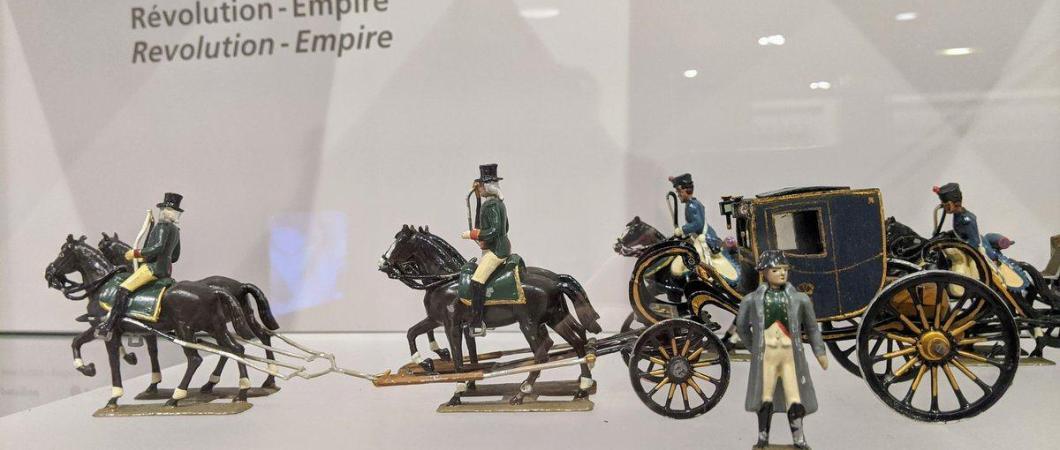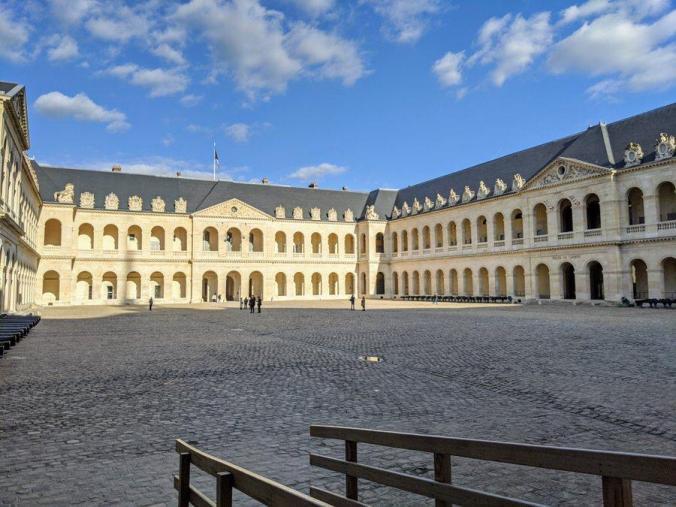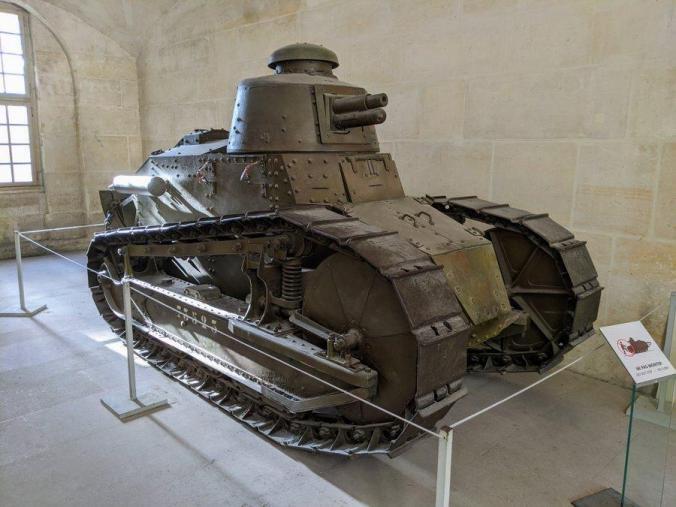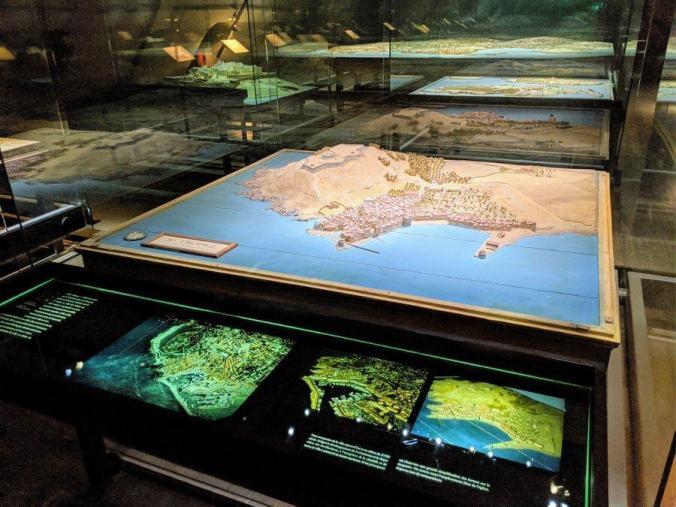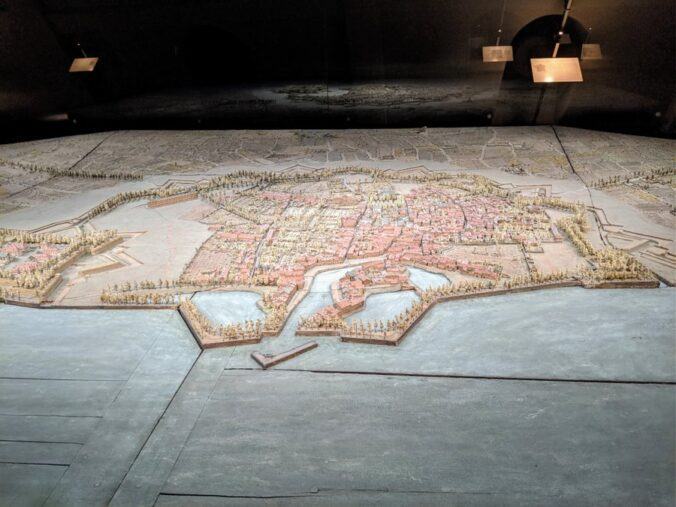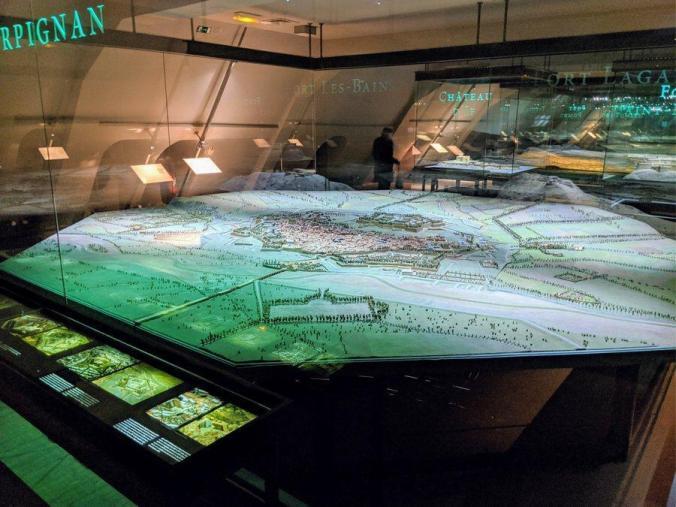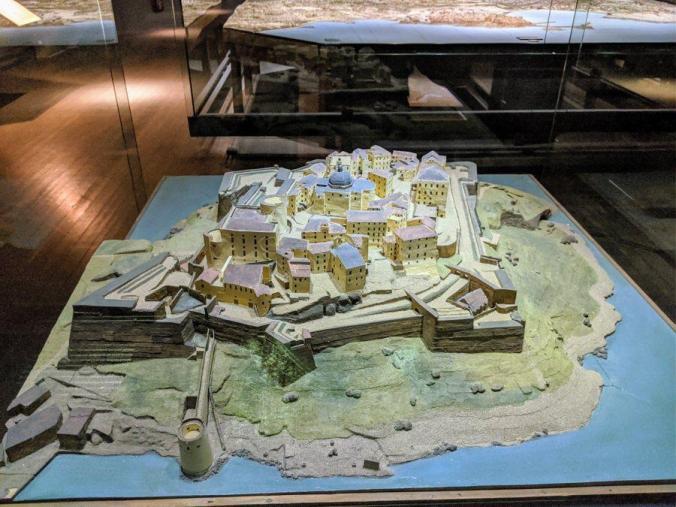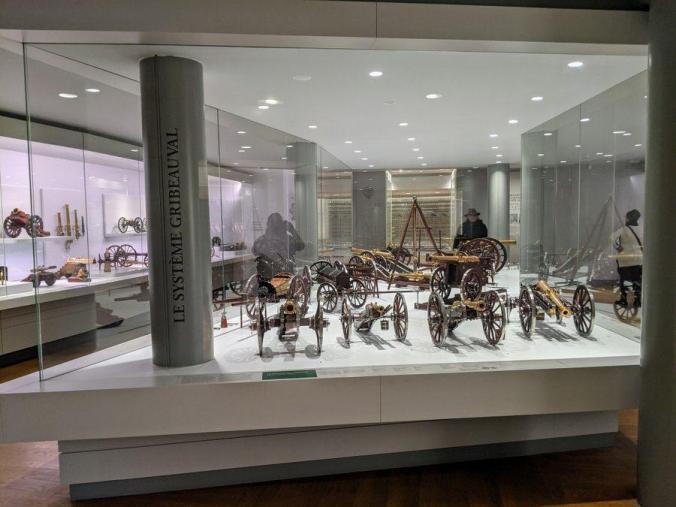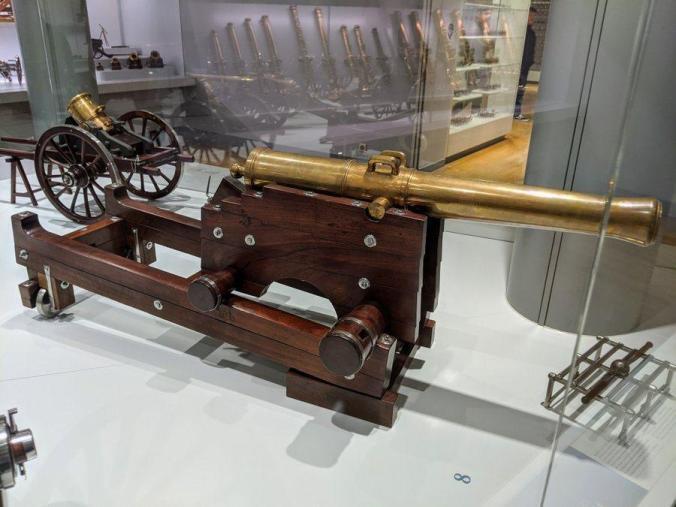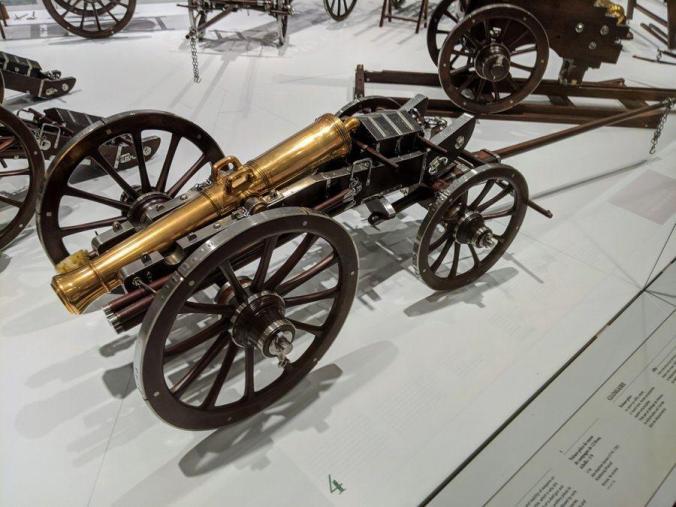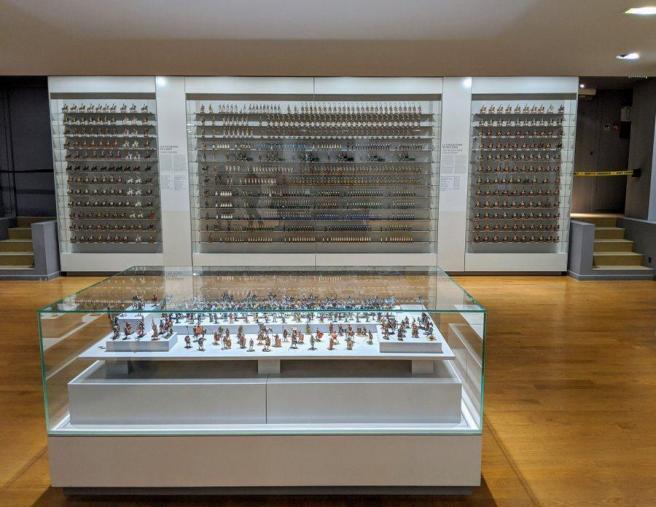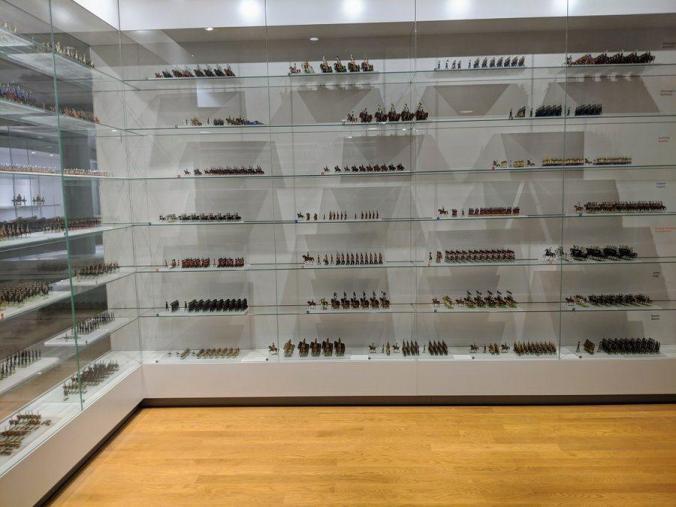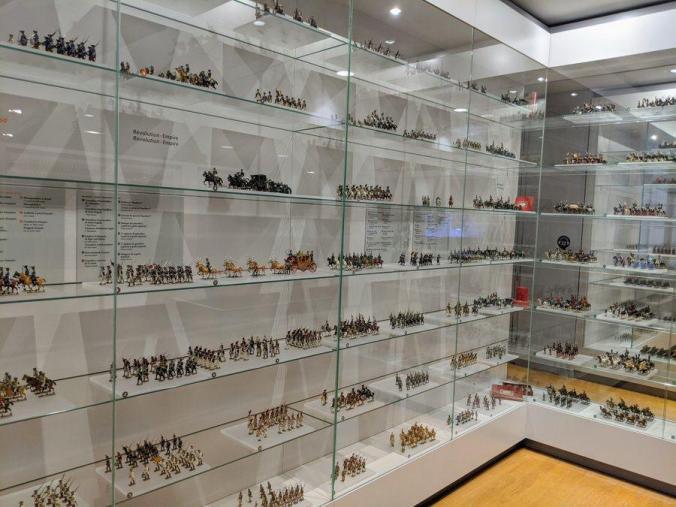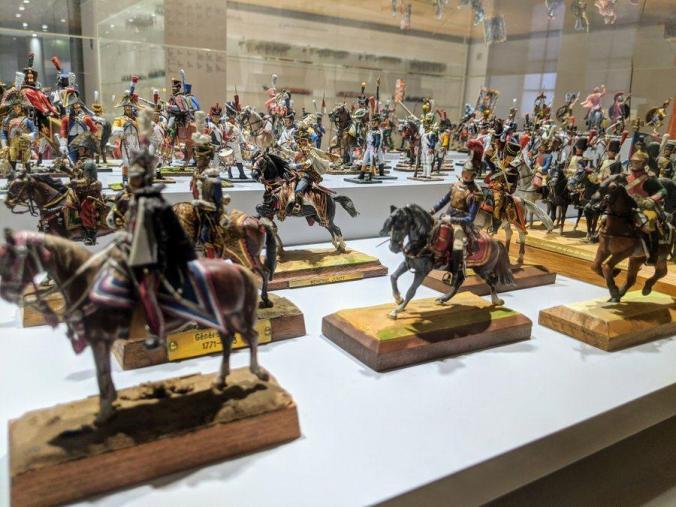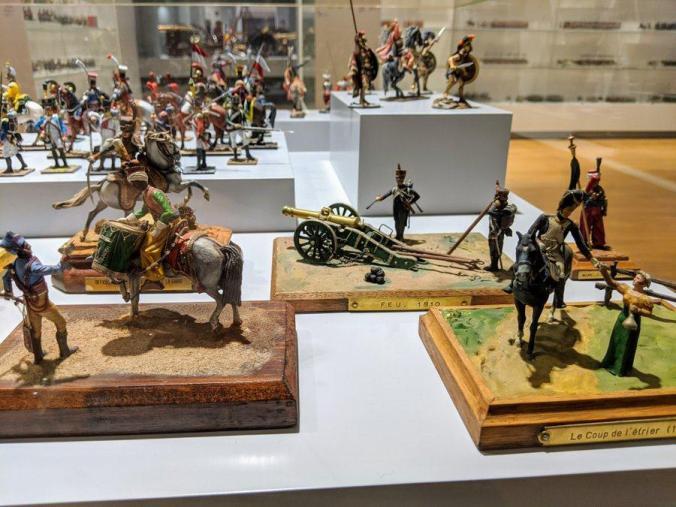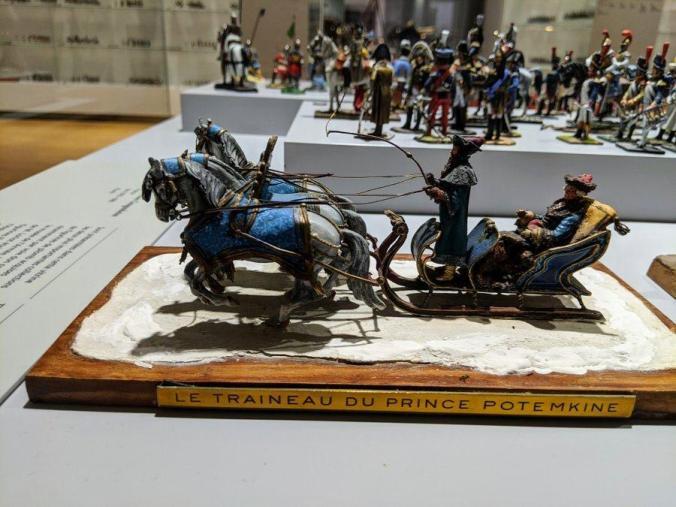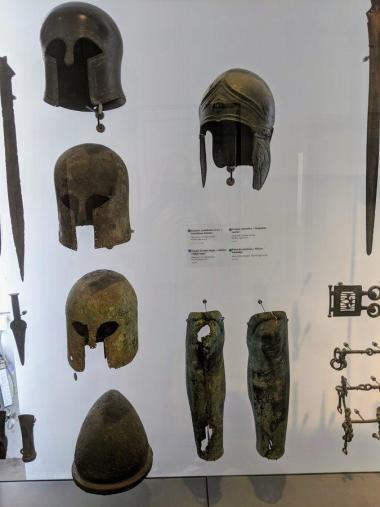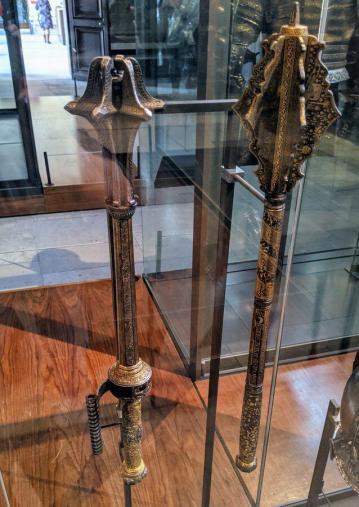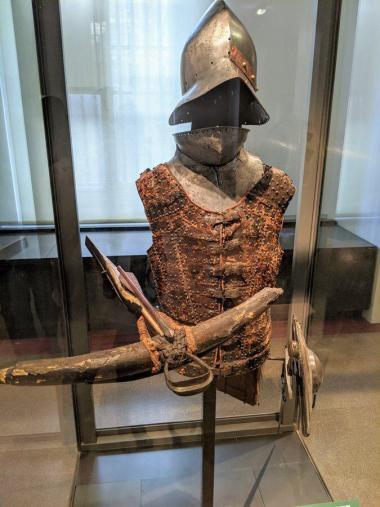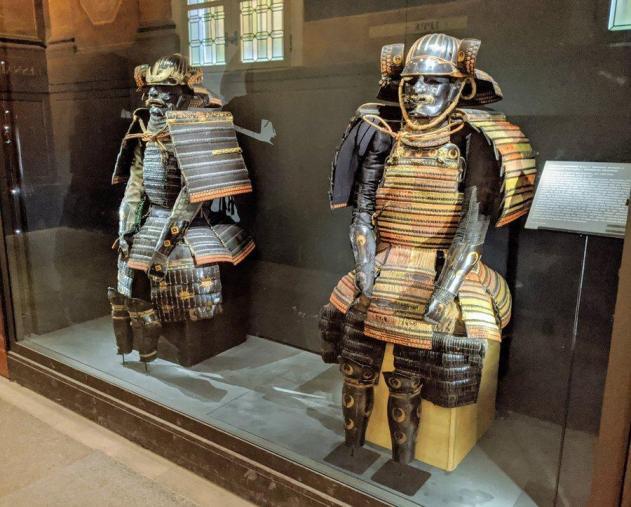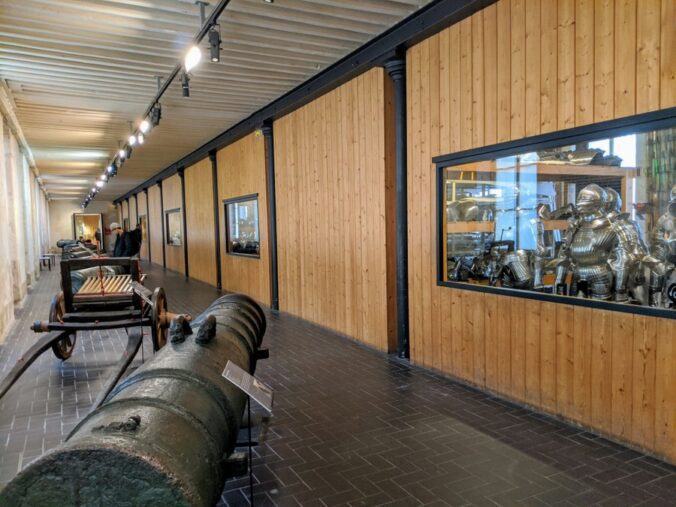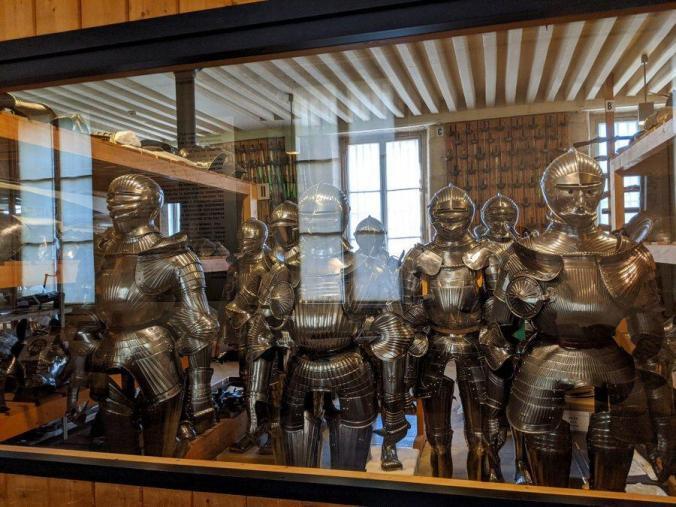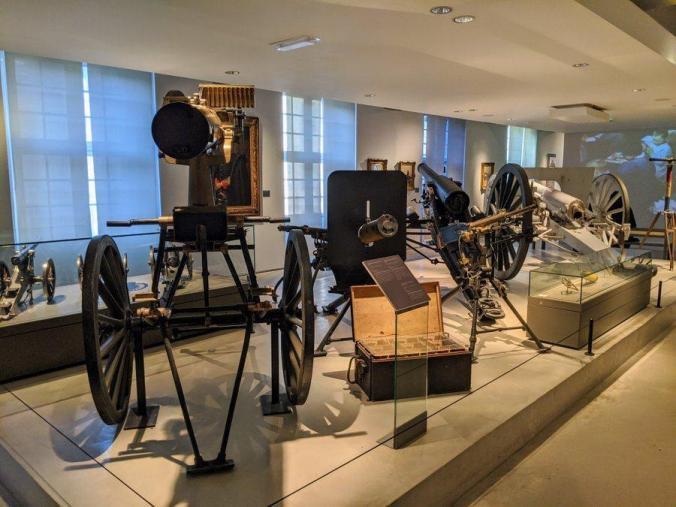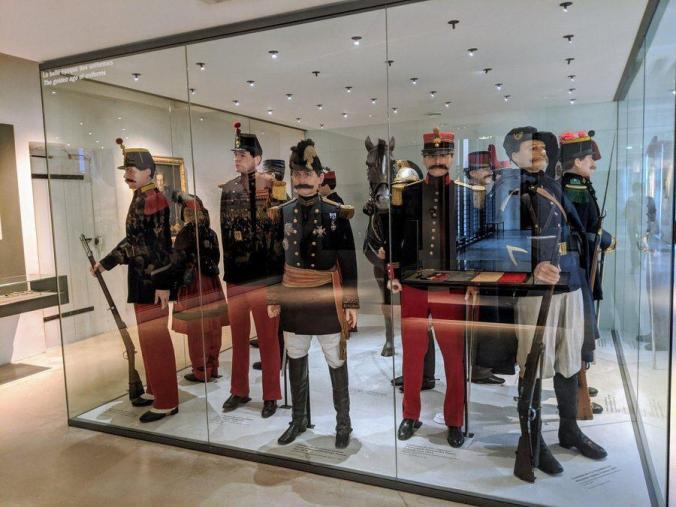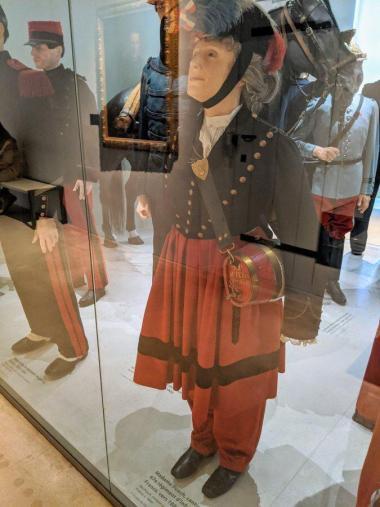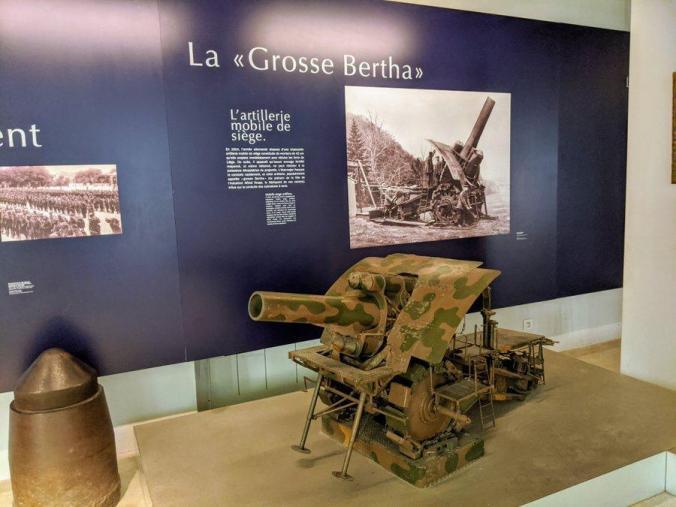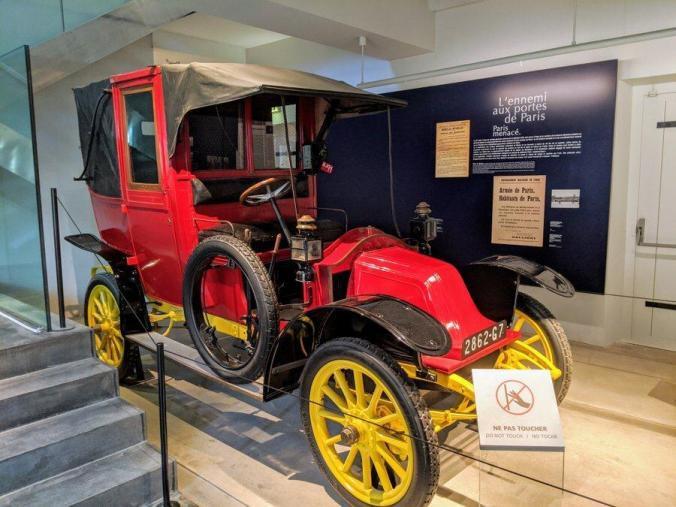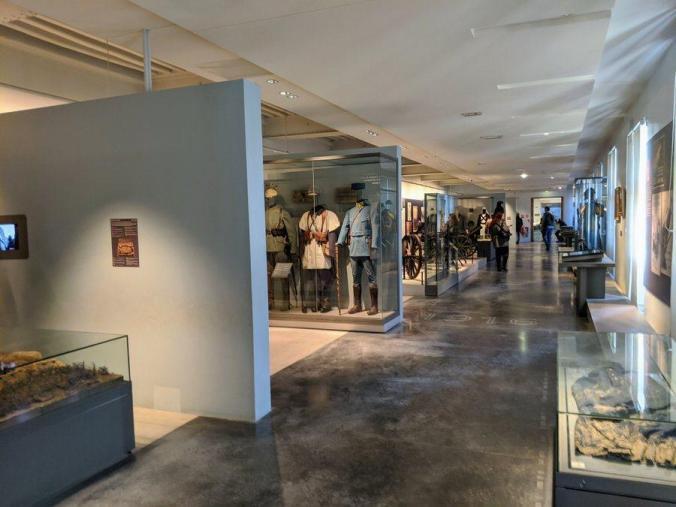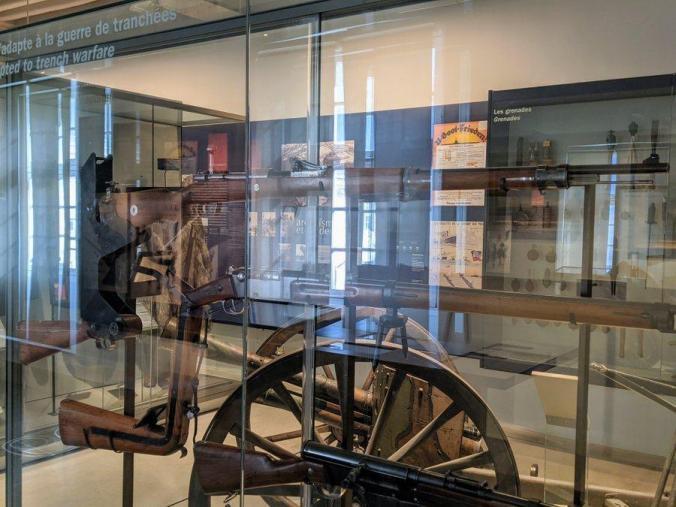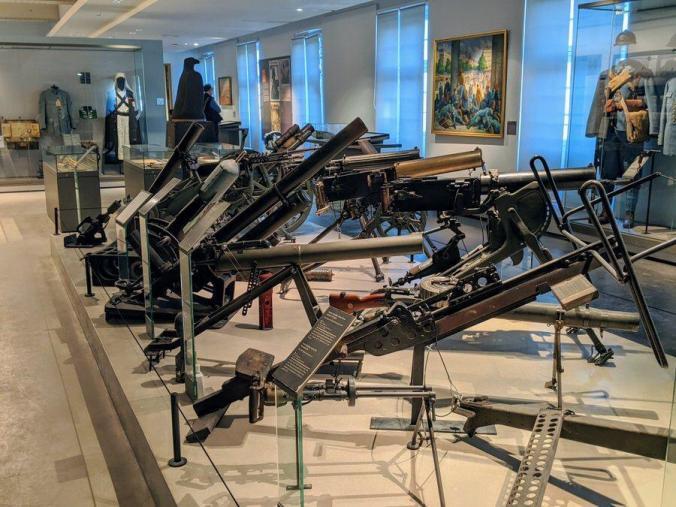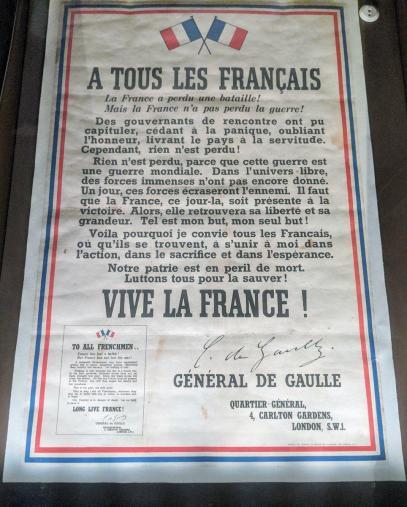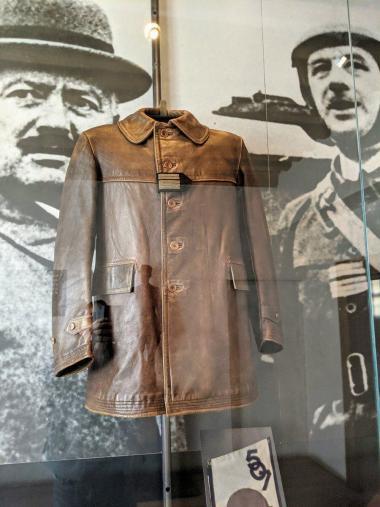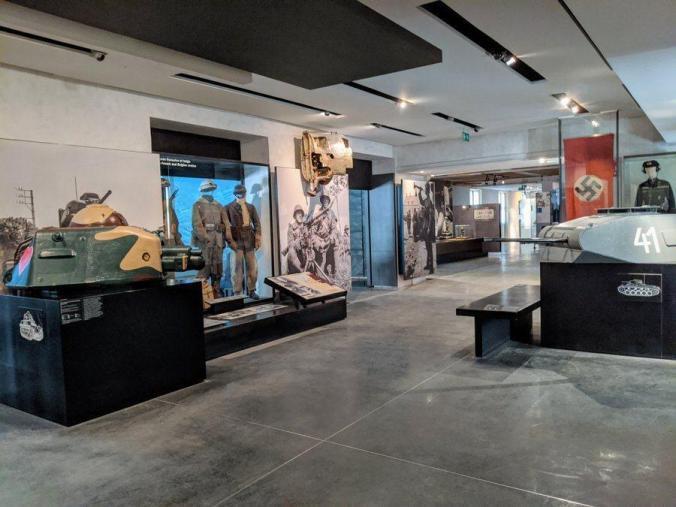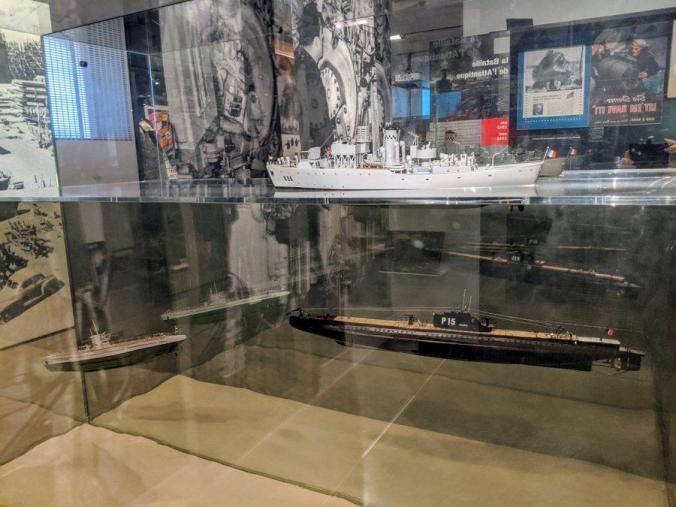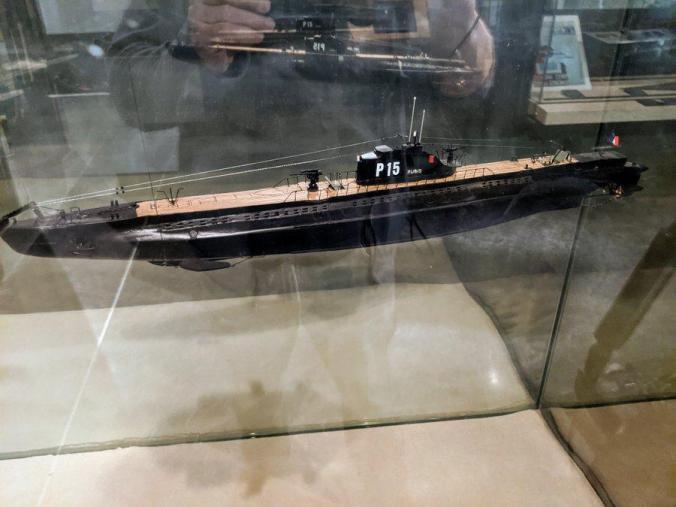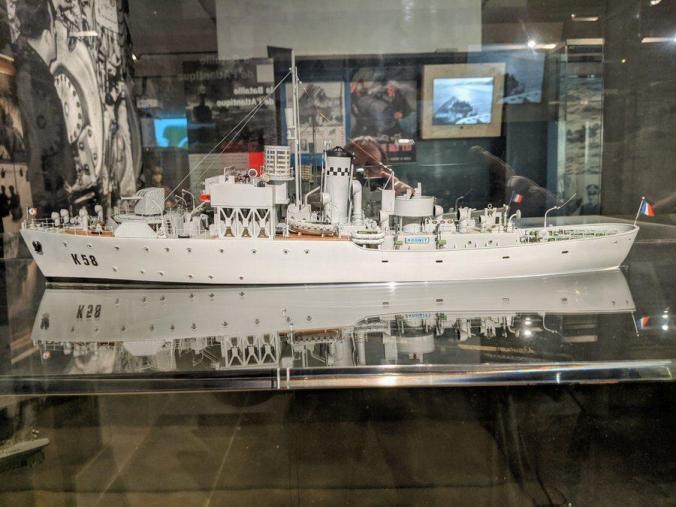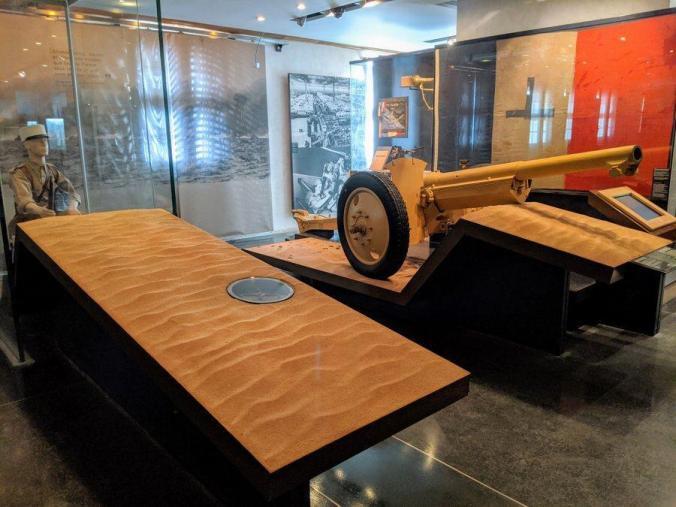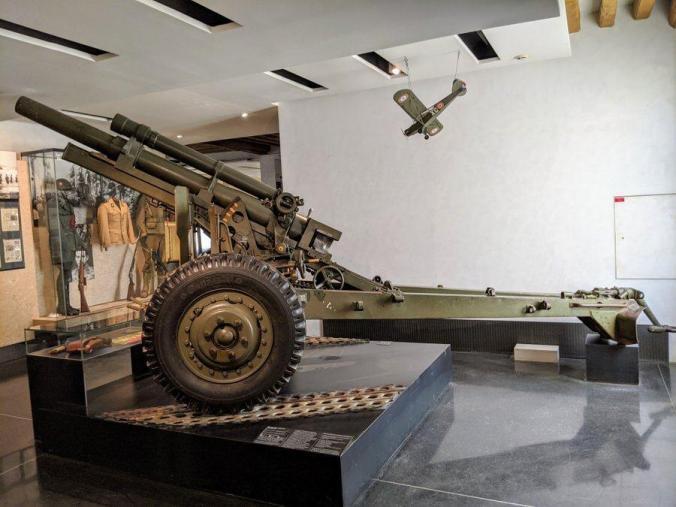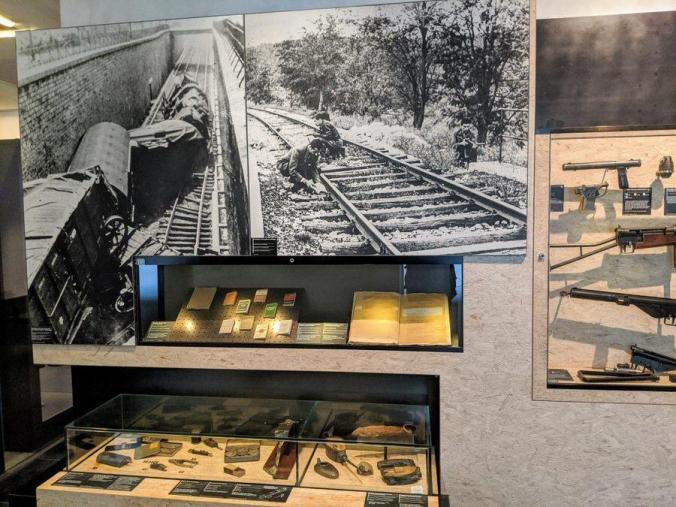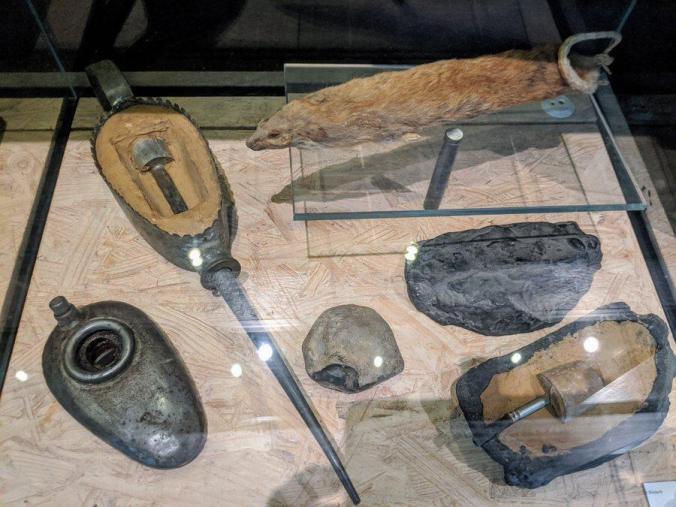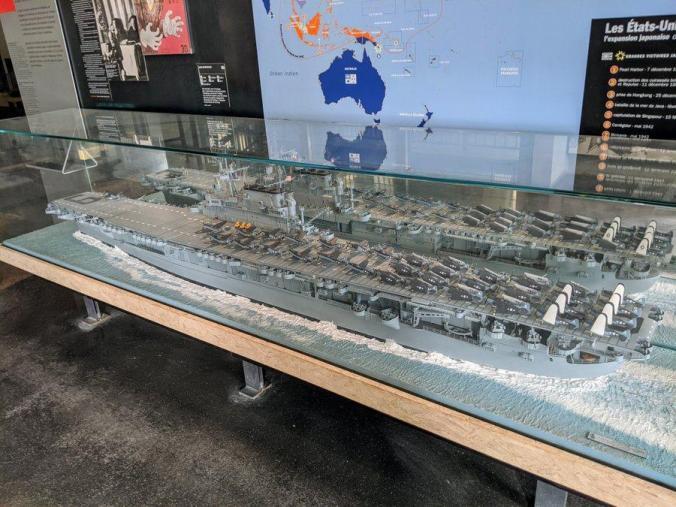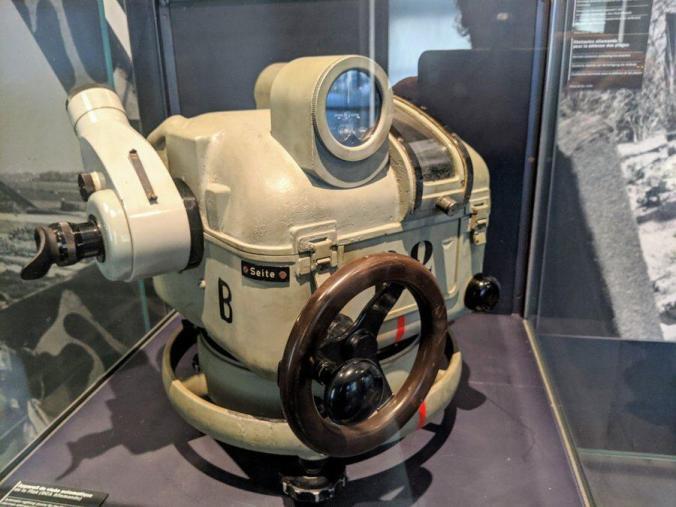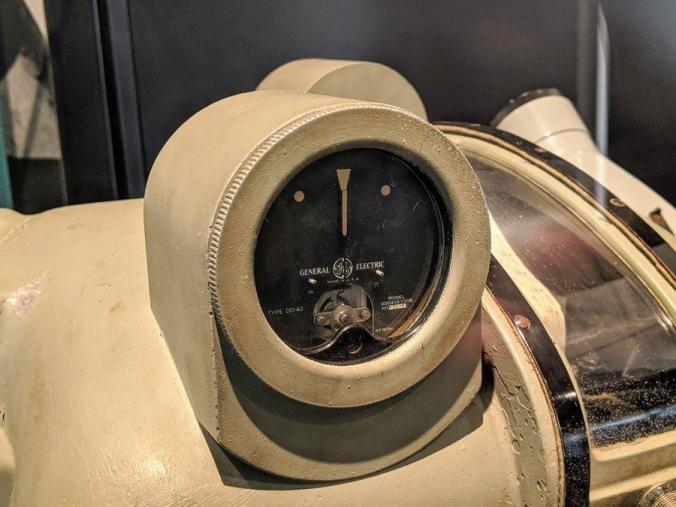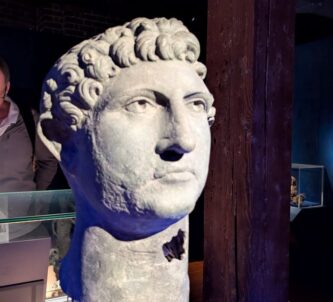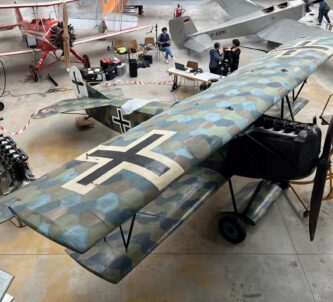The Musée de l’Armée (Army Museum) is located in the Hôtel National des Invalides (The National Residence of the Invalids), a collection of 17th century buildings in the centre of Paris that started life as a military hospital.
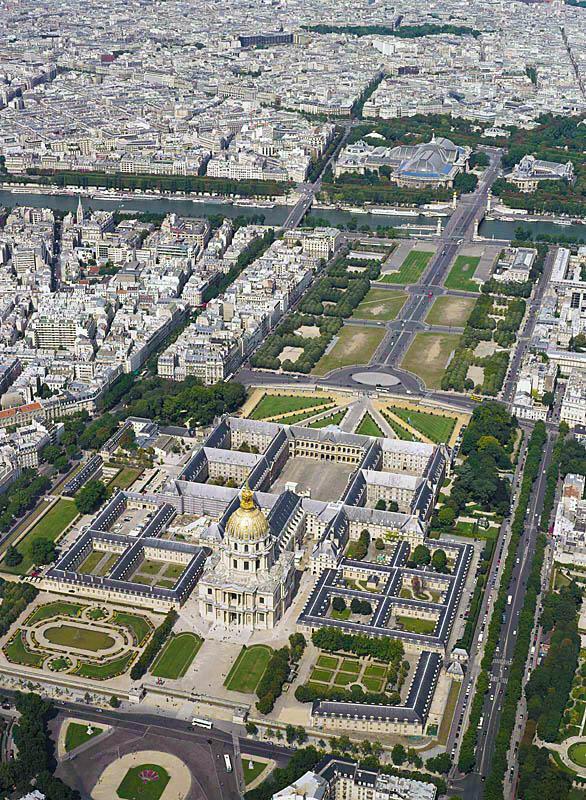
Part of the complex is still used as a hospital and a retirement home for war veterans, rather like the Royal Hospital Chelsea in London. The rest is devoted to the galleries of the Army museum, the National Monuments collection of Relief Maps, the Companions of the Liberation Museum, and the enormous Dôme which houses Napoleon’s tomb, and which is attached to Saint-Louis Cathedral*.
Post COVID-19: The museum reopened today (Sat 27 June).
The Hôtel National des Invalides was founded by Louis XIV on 24 February 1670, so this year it is celebrating its 350th anniversary.
The Army Museum itself was founded in 1905. It has almost half a million pieces in its amazing collection (with only a fraction on display!) ranging from the bronze age to the 21st century.
Dôme des Invalides
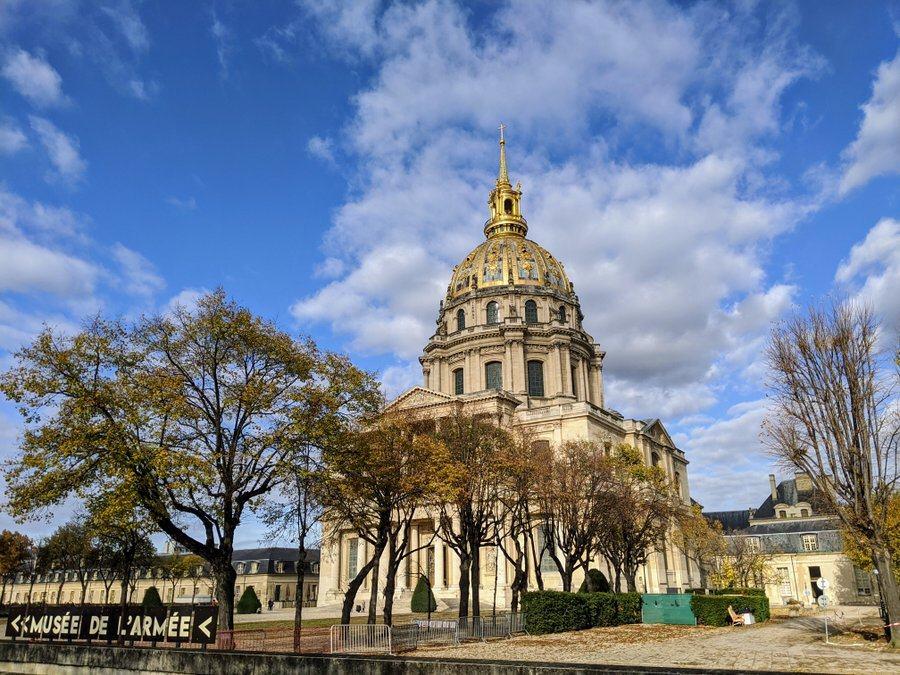
The centrepiece of the Dôme is the tomb of Napoleon I. It is a huge red sarcophagus, placed in an open crypt so from the ground floor you can look down on it, before wandering down to the crypt itself through a heavy bronze door forged from cannons captured at the battle of Austerlitz.
Like a Russian doll, the sarcophagus actually contains six coffins with Napoleon in the last.¹
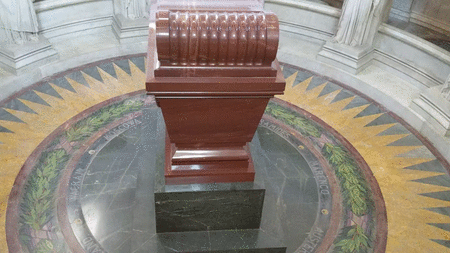
The Dôme is not just home to Napoleon. In side chapels on the ground floor there are tombs for various notables, including Napoleon II (his son), Joseph Bonaparte (older brother), Jérôme Bonaparte (younger brother), his Generals Bertrand and Duroc, and the Marshals Lyautey and Foch (Supreme Allied Commander in WW1).
The Cour d’Honneur
The Cour d’Honneur (main courtyard) is the heart of Hôtel des Invalides. Most of the museum galleries are gathered around it. There is a memorial trail around the courtyard at the first floor level.
On the east side of the courtyard, starting at the top of the building is…
The Relief Map Museum
The ‘relief maps’ are a collection scale models of French fortified towns, ports and castles created from 1668 as strategic planning aids for the military.
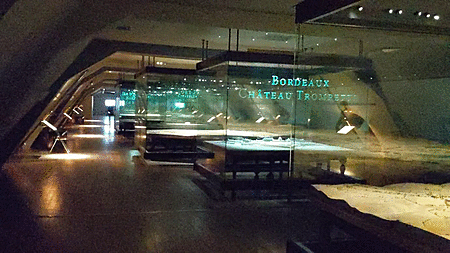
They were originally the brainchild of Louis XIV’s Minister of War, François-Michel le Tellier, Marquis de Louvois (known simply as “Louvois”), who commissioned their construction.
The idea was that they presented an accurate representation of towns and the surrounding area within artillery range, so they could be used to plan changes to the defenses and work out siege strategies.
The collection, which was originally kept in the Tuileries, grew under Louis XIV and Louis XV as they expanded their territories. Then for a while they gathered dust in the Louvre. In 1777 they were moved to their current location and restored. More were added during the French Revolution and afterwards under Napoleon, but by 1870 the practise of relief map making died out as the construction of bastioned fortifications ended.
The collection now comprises 100 x 1/600 scaled relief maps made of wood, paper and silk. It was classified as a historic monument in 1927 and the museum was created in 1943.
On display in glass cabinets in the darkened attic space, there are over twenty maps of varying sizes.
Below, on level 2, and continued on the ground floor are the…
Army Museum: Louis XIV – Napoleon Galleries
The collections in these galleries cover the army in the period from the Sun King’s reign (1643 – 1715) through to Napoleon’s (1804 – 1815), featuring uniforms, weapons, equipment, decorations, emblems, flags, musical instruments, and other unique items including some belonging to Napoleon and his generals.
Things that stood out for me…
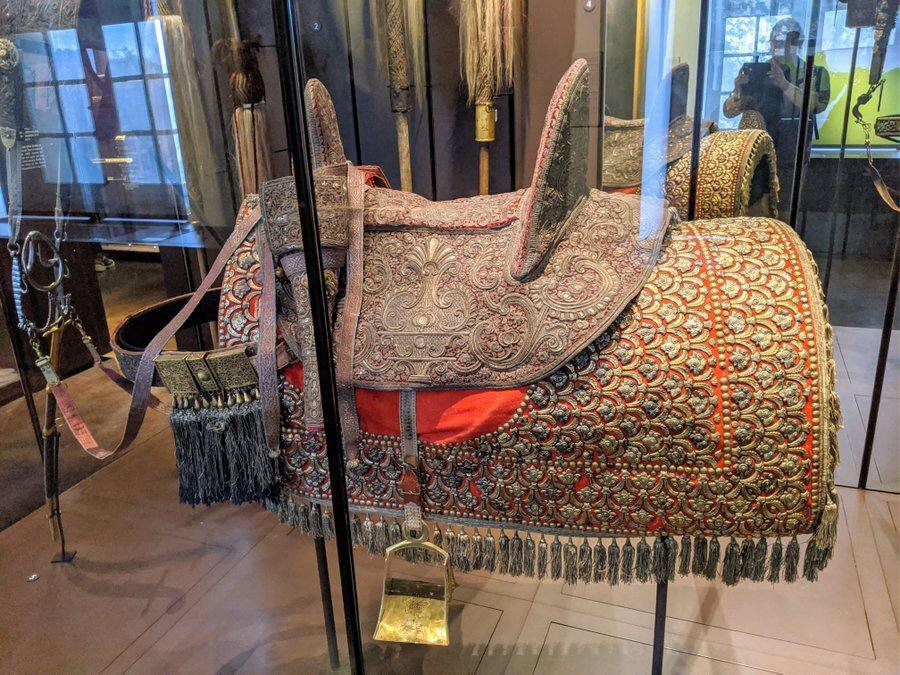
A pair of Mamluk saddles (one of them above).
At the end of the 18th century, the French both fought the Mamluks, and used Mamluk mercenaries. When Napoleon invaded Egypt he defeated an army of Mamluks at the Battle of the Pyramids (1798). A year later General Kléber began forming three companies of Mamluks de la République for the French army.
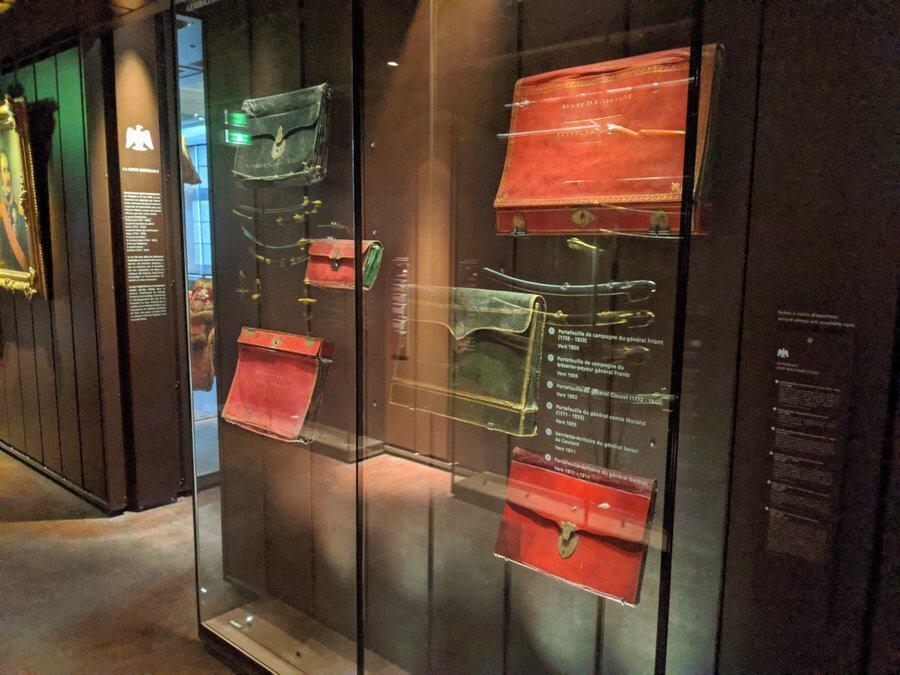
Attache cases. I’m not sure why, but there’s something fascinatingly traditional about these red cases used to carry important documents and plans around the country and battlefield. These cases belong to different French generals at the start of the 19th century.
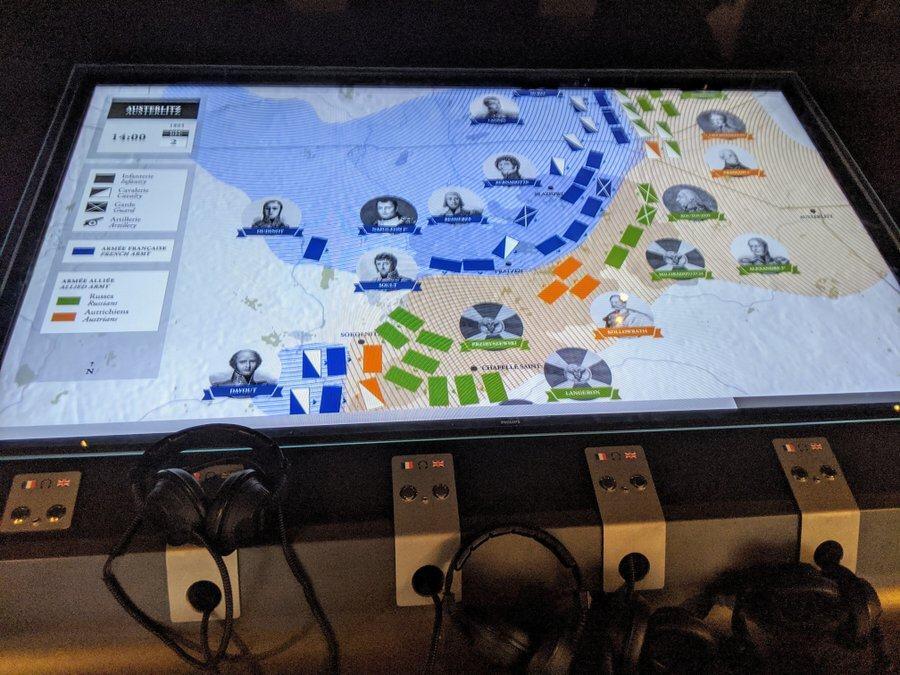
A digital presentation of Napoleon’s famous victory at the Battle of Austerlitz. It’s strategically brilliant, but shows how the ‘yin & yang’ of command & chaos, luck & order, chance & circumstance, play their roles too! I watched it through almost twice to try and grasp the strategy.
Siege muskets and grenade launchers from the 17th & 18th centuries. There are some long guns here. The monster above is a test model breech-loading “Fusil Vincennes” made around 1760. It’s 2.3 metres long including the very serious bayonet! I’m not sure what that gulley bayonet did for its accuracy!
And there are some some very practical mid 18th century grenade-launchers with curved monopod legs to stabilise them.
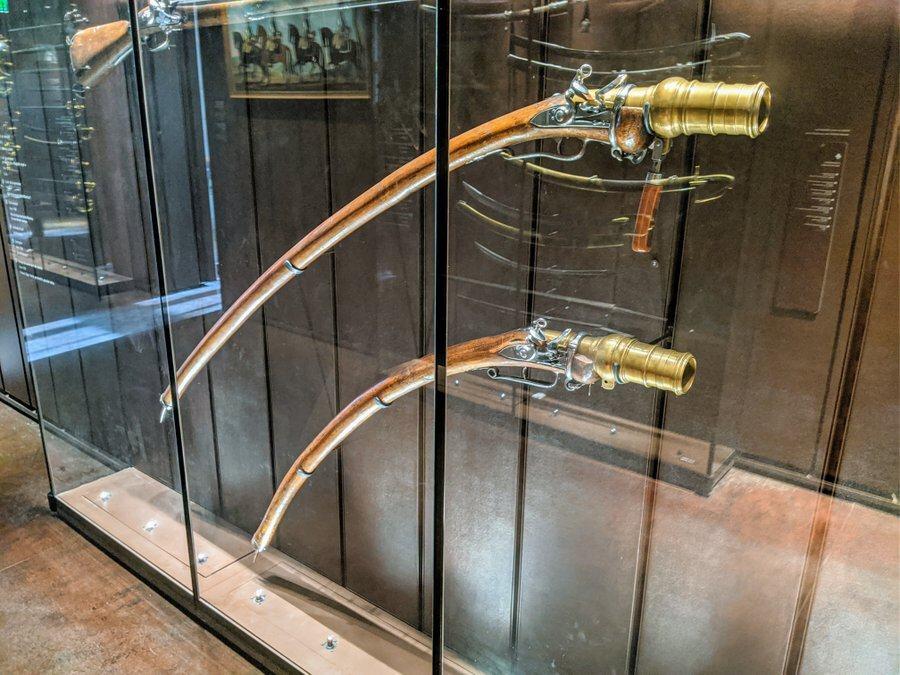
On the 1st floor there are three fascinating rooms…
Army Museum: Extraordinary Cabinets
Les Cabinets Insolites (Extraordinary Cabinets) feature some of the museum’s collection of military musical instruments, artillery models, and toy soldiers. (If you are a regular reader, you’ll know I am a sucker for models!)
The first room houses the amazing musical instruments – mostly percussion and wind instruments, some with extraordinary dragon heads and snarling mouths.
In the second room there are some of the museum’s 1,000-piece collection of scale models of artillery pieces. Some of these were made for royalty, some were honorary/diplomatic gifts, and some were used for technical design/development purposes and as training tools.
And in the third room are nearly 5,000 miniature soldiers, many of them arranged in parades. There are tin soldiers, lead soldiers, ‘paper’ (rigid cardboard) soldiers, and, representing the 20th century, some plastic soldiers too. This is just a fraction of the museum’s collection of 140,000 miniature figurines! The centrepiece display in the room has two sets of fabulous lead figures; the Loriot collection of early to WW1 soldiers, and the Guggenheim collection which centres around soldiers of the First French Empire.
In the basement is…
Army Museum: Charles de Gaulle Exhibition
Sadly I didn’t have time to see this exhibition (next visit!) which covers the life and times of Charles de Gaulle in photographs, artifacts and displays in a circular gallery surrounding a 360-degree cinema that shows a 25-min AV presentation. (My girlfriend saw it and says it was excellent!)
On the west side of the courtyard are the…
Army Museum: Arms and Armour Galleries
The Arms & Armour collection charts the development of military equipment and weapons from the 13th to 17th centuries, and even before – there is some ancient Corinthian armour from around 390 BC.
Most of the items come from the royal and noble collections of Europe, but some items come from as far afield as medieval Japan. Some weapons and armour are gathered in themed rooms and there are also areas about hunting, jousting and tournaments, shooting, luxury gunsmithery and artillery.
These galleries also include ‘the Arsenal’ – a storeroom with rows of suits of armour from the museum’s collection on display.
Also, spread over three floors on the west side of the courtyard are the…
Army Museum: World Wars Galleries
This is a long chronological trail of galleries covering the First and then Second World Wars, both of which had a profound effect on France.
The first galleries have uniforms and weapons from the start of WW1 and before. It’s a surprise to see that at the end of the 19th century in the pre war years the French Army had women canteen carriers.
There’s an interesting model of a Big Bertha (“Grosse Bertha”) artillery piece. These huge German Minenwerfer-Gerät (M-Gerät) 42 cm howitzers were used to devastate the forts of Liege in Aug 1914. Suddenly even the strongest fortifications seemed vulnerable and it began to change French military strategy.
By the stairs up to the third WW1 gallery, there’s a bright red automobile. It looks a little out of place and I couldn’t work out the significance of the ‘Taxi de la Marne‘. It turns out this became the popular name for the Renault Type AG hackney carriage. In september 1914 some 600 of these taxis were gathered at Les Invalides and used to transport 6,000 troops of the French Army’s 62nd Division, five at a time, from a railway station outside Paris 50-miles to the front at Nanteuil-le-Haudouin for the First Battle of the Marne.
The First World War galleries lead straight into the Second World War galleries, which start with France and the low countries being overrun. A certain tank division commander, Brigadier-General De Gaulle, fought the invaders but then escaped to England when he refused to accept the French armistice. From London he exhorted the French to resist occupation and to continue the fight.
The WW2 galleries focus on the role of the Free French, but not exclusively. There are also displays covering the activities of other allies, including the USA’s war with Japan in the Pacific. But in the exhibits and displays we do get to see aspects of the Free French Army and Navy in North Africa, in the Mediterranean, on convoy duty in the Atlantic, on SOE special forces operations in occupied France, and the work of the Resistance too.
On the west side of the Dôme & St Louis Cathedral, and opposite the annex where the ticket office is, is the…
Museum of the Order of the Liberation
The Order of the Liberation was created by General de Gaulle in November 1940 to honour the Free French fighters. The museum tells the story of Free France from 1940 to 1945. Unfortunately I didn’t have time to see it.
Interesting side story – The Morin Family
I found a mention of this on the museum’s website. During the Second World War, the Hôtel des Invalides was turned into a barracks by the occupying force, but the Morin family, who lived on the premises, secretly sheltered Allied pilots there for three years – right under their noses!
There is a book about it, Escape from Paris: A True Story of Love and Resistance in Wartime France, which I’ll link below in the Further Reading section.
Note: The Army Museum has a lot of highly reflective glass cases and cabinets, which really messes with photographs – apologies!
* You can see into the St. Louis Cathedral from the back of the altar in the Dôme, but it’s not generally open to the public except on guided heritage tours of Les Invalides.
Declaration: I was on a short-break to Paris. My press card gave me free entry to the museum.
Factbox
Post COVID-19:
The Musée de l’Armée reopened on Sat June 27th for the usual hours (1000 – 1800)
There are new safety and social distancing measures:
- Staff and visitors over the age of 11 will be required to wear a mask in the museum in closed areas (reception desk, galleries, Dome church, gift shop…)
- Number of museum visitors will be limited in the galleries
- Sequence of the visit will be indicated within the galleries
- The social distancing rules and preventive measures will be applied
- Hand sanitiser gel will be provided in the museum
- Cloakroom will remain closed
Website:
Musée de l’Armée
Getting there:
Musée de l’Armée
Hôtel national des Invalides
129, rue de Grenelle
75007 Paris
Hôtel national des Invalides is easy to get to. It’s within walking distance (600m) of the Seine at Pont Alexandre III.
The entrance is at 129 rue de Grenelle (visitors with mobility disabilities enter at 6, boulevard des Invalides). The southern entrance (Place Vauban) has been closed under the new post-COVID arrangements.
Being in the centre of Paris, there are loads of transport options by RER, Metro, bus and cycle stations. They are listed here.
Opening Hours:
COVID-19 notwithstanding, the museum is open every day of the year (except 1 Jan, 1 May & 25 Dec) from 10.00am to 6.00pm. Last entry 5.30pm.
Entry Price:
| Adult | € 14.00 |
| Children (under 18), EU students under 26, disabled | Free |
Keep your eye open for the Paris Museum Pass which is currently suspended, but if and when it returns, it used to offer free, unlimited queue-jump access to all areas of the Musée de l’Armée (including temporary exhibitions) as well as over 60 other museums and monuments in Paris and the Paris region. Last year (2019) a 2-day pass cost €52; 4 days for €66; 6 days for €78. Fingers crossed, it might come back.

